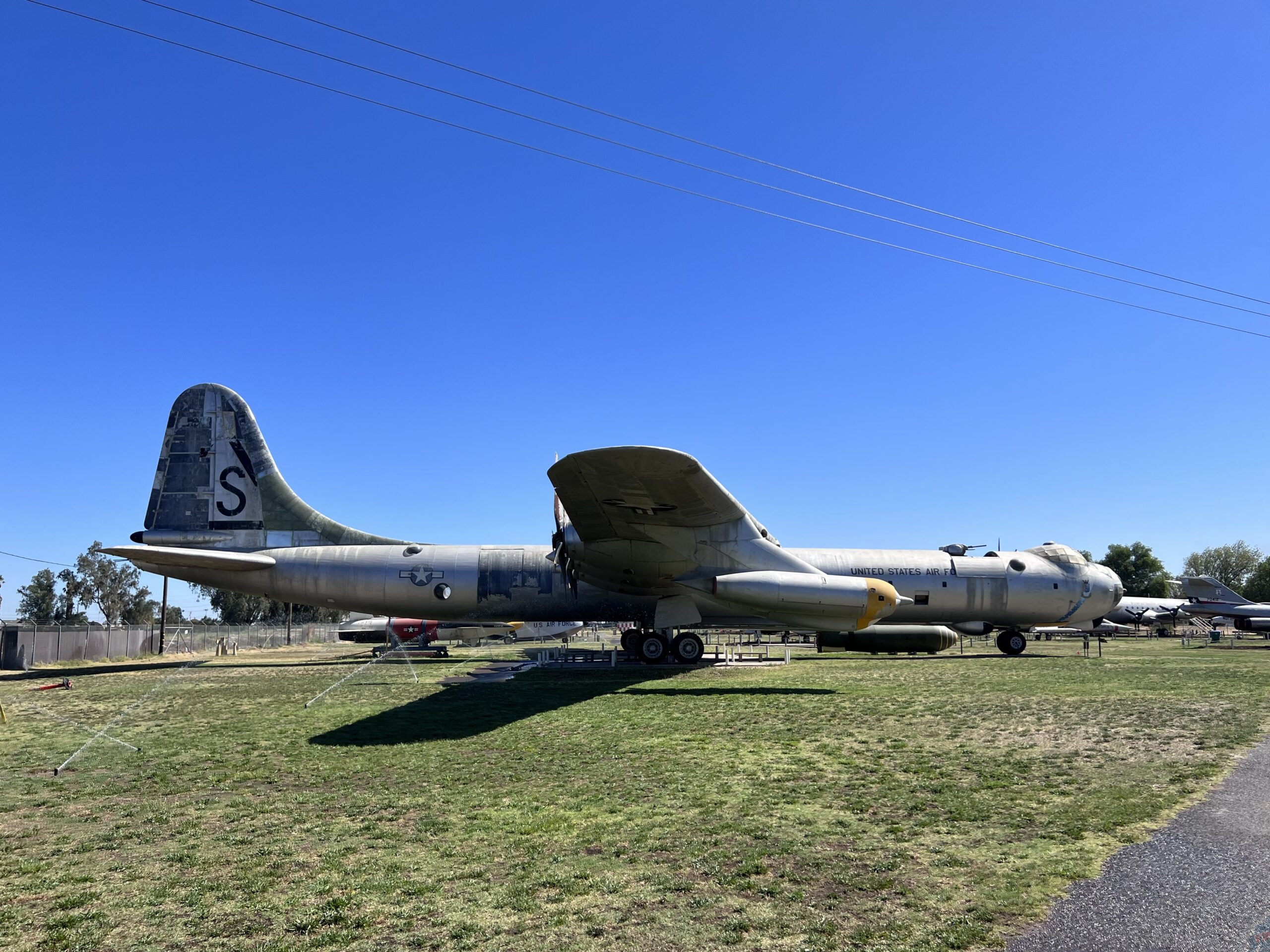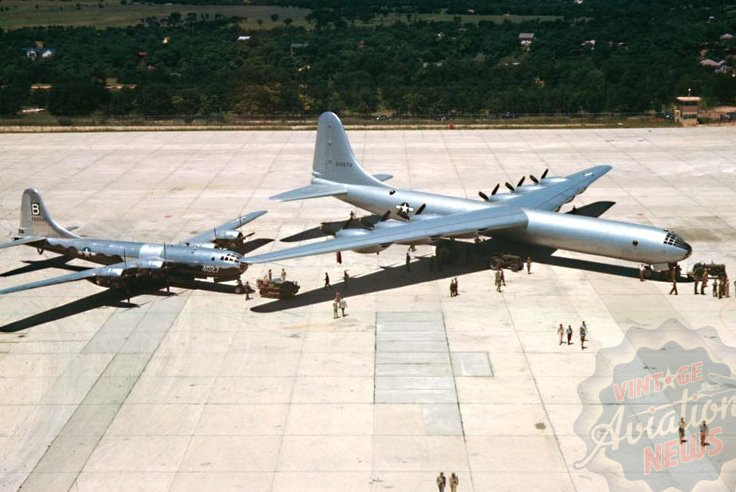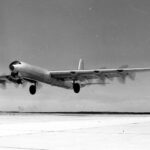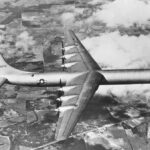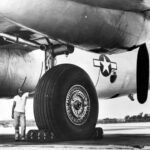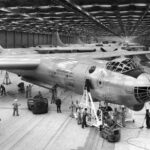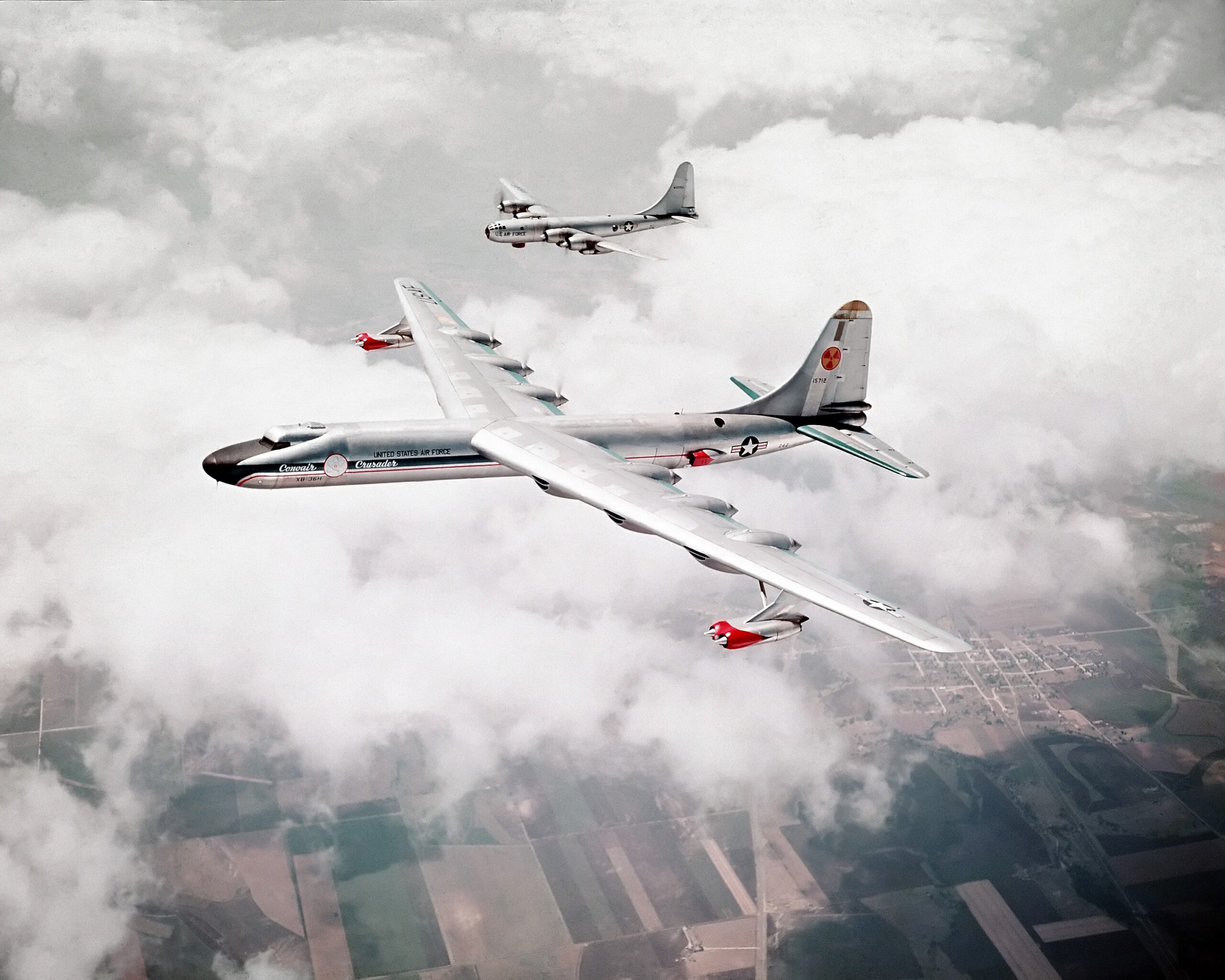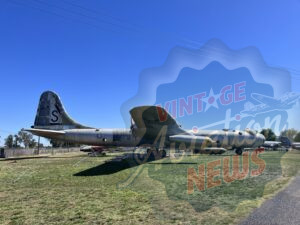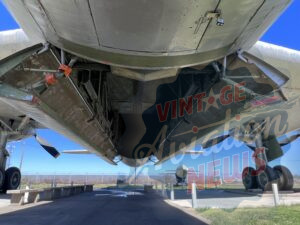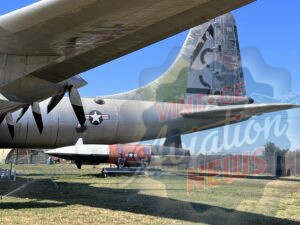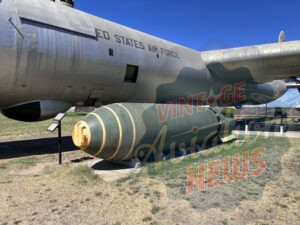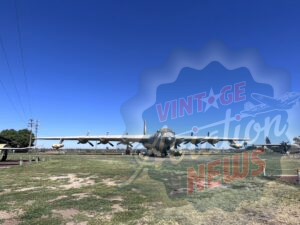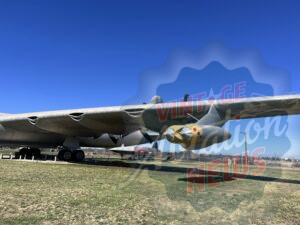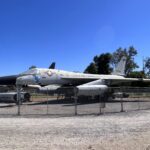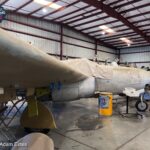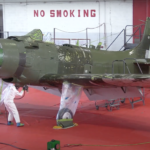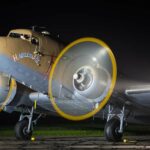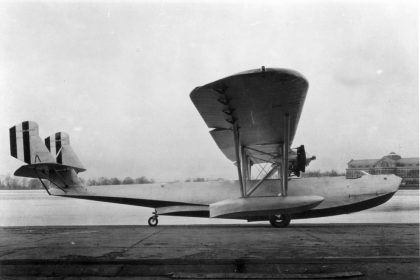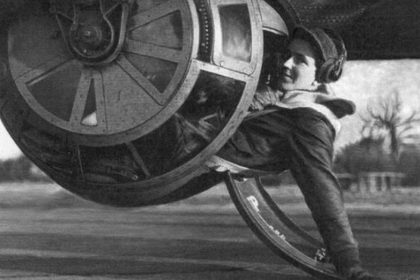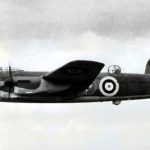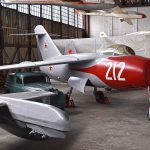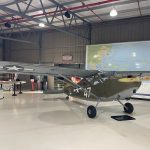by Adam Estes
Convair’s massive B-36 Peacemaker emerged from a U.S. Army Air Forces’ request in early 1941 for a strategic bomber with intercontinental range. It was a requirement driven by contemporary fears that Britain might fall to a German invasion, which was not inconceivable at the time. Convair’s engineers worked at an incredible pace, having the first prototype, XB-36 42-13570, ready for unveiling in August, 1945. However, it wasn’t until August 8th, 1946, that the XB-36 performed its maiden flight in Fort Worth, Texas, with Convair’s legendary test pilot, Beryl Erickson at the controls. Taking place at noon, the air temperature that summer’s day exceeded 100°F, but the inside the cockpit, the aircrew had to bear conditions upwards of 140°F!
With the flight a success, and mass production already well under way, the newly independent U.S. Air Force received its first operational B-36 in June 1948, all of them slated for Strategic Air Command (SAC). Powered by six Pratt & Whitney R-4360 engines, the B-36 could cruise at 230 mph, however with the addition of four General Electric J47 jet engines on wing-mounted pylons, the aircraft could reach speeds of 435 mph. The jet pods, added with the introduction of the B-36D (and retrofitted to all preceding models still in service) ran on the same aviation gasoline as the piston engines. The B-36 could carry up to 87,200 pounds of nuclear or conventional weapons and had a range of up to 10,000 miles. While Peacemakers formed the bulk of SAC’s nuclear deterrent fleet between 1949 and 1955, there were a variety of design offshoots, with some B-36s having purpose-built, strategic reconnaissance roles. A handful of others received modifications to test the launch and retrieval of parasitic aircraft like the McDonnell XF-85 Goblin fighter or the specially-adapted RF-84F/K Thunderflash photographic reconnaissance jets. One example, NB-36H 51-5712, even carried an operational nuclear reactor aboard, with the aim of proving whether such a device could power the bomber in flight. While this aircraft never did propel itself with nuclear power, the design team were able to demonstrate that the crew would not receive excessive radioactive exposure from the reactor in normal flight conditions.
In all, Convair built 384 B-36s by the time production ceased in August 1954. Despite massive expenditures on the program, the aircraft was arguably obsolete by the time it entered service. It was too slow to evade contemporary enemy jet fighters, such as the MiG-15, and lacked any aerial refueling capability. However, during its prime, the Peacemaker was the only USAF strategic bomber with sufficient range to penetrate the Soviet heartland, so the type had to straddle the breach until SAC could field sufficient numbers of Boeing’s far more capable B-52 Stratofortress. The 93rd Bombardment Wing became the first operational B-52 unit in March, 1956, flying from their home at Castle AFB in Atwater, California. This marked the beginning of the end for the B-36, with early model B-36s already in the boneyard, and the rest soon to follow. The last handful of USAF Peacemakers retired in early 1959, with the final operational flight taking place on February 12th, 1959 (B-36J 52-2827 now on display at the Pima Air & Space Museum in Tucson, Arizona). The final B-36 flight ever, involved the example presently with the National Museum of the U.S. Air Force (NMUSAF) in Dayton, Ohio, B-36J 52-2220, which flew from its Arizona boneyard to Dayton on April 30th, 1959. Thus ended the saga of the world’s biggest ever strategic bomber. Despite the aircraft having never flown in anger, the type served an important role during the early days of the cold war by dampening Soviet territorial ambitions in Europe and elsewhere.
Just four complete B-36 Peacemakers survived the scrapping operations to the present day, these being the aforementioned B-36Js at the NMUSAF and Pima, B-36J 52-2217 at the Strategic Air Command and Aerospace Museum in Ashland, Nebraska, and RB-36H 51-13730 at Castle Air Museum in Atwater, California. It is the latter example which is the subject aircraft of this profile. Convair RB-36H-30-CF Peacemaker 51-13730 was the 275th airframe constructed. The bomber rolled off the Convair assembly-line adjacent to Carswell AFB in Fort Worth, Texas during 1952, with the USAF formally accepting her for service that September. The 28th Strategic Reconnaissance Wing at Ellsworth AFB in Rapid City, South Dakota became the aircraft’s first operational unit. The Peacemaker received an upgrade to “Featherweight Configuration II”, ironic terminology for such a massive aircraft, but this involved removing a lot of the redundant items from the airframe, such as its defensive armament. In 1957, the aircraft moved to Chanute AFB in Rantoul, Illinois, where it became an instructional airframe on outdoor display alongside other decommissioned aircraft in the base’s air park. While there, 51-13730 received a repaint in the markings of B-36D-45-CF 44-92065, c/n 62 (originally built as a B-36B-15-CF) from the period when that aircraft flew with the 326th BS, 92nd BW from Fairchild AFB in Spokane, Washington. The actual 44-92065 had already flown to Davis-Monthan AFB for decommissioning (and eventual scrapping) on February 27, 1957. While on external display in Rantoul, the aircraft received a fair amount of TLC, and part of this involved replacing some of the corroded magnesium alloy skins, which hadn’t faired too well after decades of exposure to the elements. In 1991, a year or so before Chanute’s closure, the NMUSAF assigned the airframe to Castle Air Museum. The move took place in 1992 and involved a huge disassembly operation, as one might imagine, with the pieces making their way by rail on eleven flatbed cars to their new home for reassembly and repainting, which museum volunteers completed in 1994. She has been on display ever since and is the only surviving RB-36H variant of 73 built. Now looking rather tired, museum volunteers are part way through a projected decade-long restoration effort which will hopefully see the aircraft last long into the future.
Adam Estes is a university student who has a passion for aviation history. He is a volunteer for the Planes of Fame Air Museum in Chino, California, and has kept tabs on numerous aircraft and museums around the world. His goal is to become a museum curator while continuing to write articles and books on aviation history.
Editors Note: The B-36 remained in service for just a handful of years, and the living memory of those days is fading fast. For those of us too young to have seen this aircraft in flight, but wishing to have some idea of what that must have been to witness in person, one need only turn to the 1955 motion picture, Strategic Air Command. While laden with leaden dialogue and a stagnant plot line, there is no disputing the extraordinary historical gift this film has provided us, with its technicolor recording of B-36 operations; for that alone, we must be grateful. The clip reveals a marvelous portrait of this magnificent, though short-lived, giant in all its glory.







